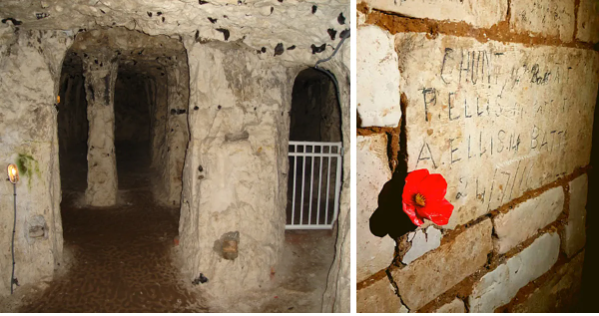The underground city of Naours, located in northern France, is a fascinating historical site consisting of underground tunnels and chambers. It was originally a network of limestone quarries that were later expanded and used as a refuge during times of conflict, particularly in the Middle Ages. This underground shelter, known locally as “many”, was used by the inhabitants of the area to protect themselves from invaders and war conflicts, such as the Norman invasions and religious wars. By the 17th century, thanks to the rampant destruction of the Thirty Years’ War, the underground city had a large and fairly well-settled contingent of residents.
The underground city of Naours consists of over 300 rooms, which were used for various purposes such as living quarters, chapels, stables, and storage areas

Consisting of 300 rooms and 28 galleries, the Cité souterraine de Naours hosted roughly 3000 people at its height. Along with these human inhabitants, there were also spaces for keeping livestock, as well as three chapels, multiple town squares, and a bakery with working ovens. The chimneys from these ovens and from any other fires underground were carefully routed through the existing structures aboveground to hide the existence of the daily life taking place 22 meters (72 feet) below ground.

One of the most intriguing aspects of Naours is the extensive graffiti left by past inhabitants. These inscriptions range from simple names and dates to more elaborate carvings, providing a historical record of the city’s use over the centuries. The graffiti from World War I soldiers is particularly poignant, capturing the thoughts and emotions of young men facing the horrors of war.




